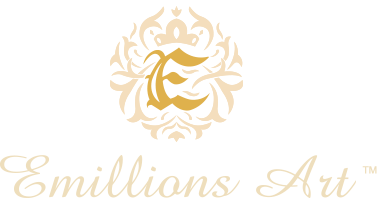“Valuation” of fine art is the comprehensive process of determining the economic or market value of artworks. Qualified experts conduct this process, often art appraisers, who apply various methodologies and considerations to assess the worth of individual artworks or entire collections. Valuation is essential for various purposes, including insurance, taxation, estate planning, purchase and sale negotiations, and investment decisions.
Key elements of valuation in the fine art domain include:
Market Analysis: Valuation experts analyze the current state-of-the-art market, including recent sales data and trends. They consider factors such as supply and demand, economic conditions, and shifts in art market dynamics.
Comparable Sales: Comparative analysis examines recent sales of similar artworks by the same artist or from the same art movement or genre. These sales serve as benchmarks for estimating the value of the subject artwork.
Artist Attribution: The valuer’s expertise plays a crucial role in evaluating the artist’s reputation, significance, and market demand. Renowned artists often command higher prices, and an accurate attribution is paramount.
Provenance and History: A thorough examination of the artwork’s provenance, exhibition history, ownership records, and historical documentation is essential. A strong, well-documented provenance can positively affect an artwork’s value.
Condition Assessment: The physical condition of the artwork is carefully evaluated. Any damage, restoration, or alterations are considered, as they can significantly impact value.
Technical Analysis: Scientific and technical methods may be employed, such as pigment analysis, radiography, and UV examination, to uncover hidden details, authenticate the artwork, and assess its condition.
Art Historical Context: Understanding the broader art historical context is important for assessing the work’s significance within the artist’s body of work, a particular art movement, or a historical period.
Market Trends: Valuers monitor trends in collecting preferences, as these can influence the value of artworks. Factors like shifts in art criticism, exhibition exposure, or changes in taste are considered.
Legal and Ethical Considerations: Valuation experts adhere to legal and ethical standards, such as those outlined in the Uniform Standards of Professional Appraisal Practice (USPAP) in the United States, to ensure objectivity and transparency in their valuation process.
Valuation Report: A formal report is generated, summarizing the findings and conclusions of the valuation. This document typically includes a detailed artwork description, the methodologies used, market analysis, and a final estimated value.
Valuation in the fine art domain is a dynamic process that can change over time due to various factors, including market fluctuations and shifts in an artist’s reputation. To ensure the accuracy of valuation, periodic re-evaluations are often recommended. Emillions Art has specialists that ensure your valuation is accurate as events affect the market. Academic valuation practices aim to provide objective, well-informed, and defensible estimates of an artwork’s worth, contributing to the integrity of the art market and aiding decision-making for art owners, collectors, and institutions.



